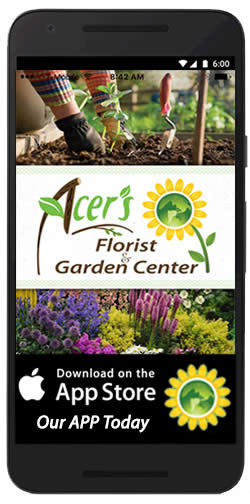
One of the most spectacular winter blooming plants is the Florist's Cineraria (Pericallis x hybrida). What makes these plants so special is that the deep green, slightly lobed leaves of these colorful beauties are often completely covered by immense clusters of velvety daisy-like flowers for their entire growing season.
These bright and bushy plants have an amazing kick of contrasting colors. The blossoms may be white, pink, red, blue, purple or violet, with blue or white centers and rings of contrasting colors that create a rainbow of hues for any sunny windowsill.
These beautiful plants are native to the Canary Islands off the coast of Portugal. Annuals that can bloom indoors from as early as December to as late as May. If they are still blooming during a warm spell, you can put them outside--they are great for attracting butterflies! Few plants can beat these beauties for color while they are doing their thing.
Cinerarias do best in a bright room or sunny windowsill. They are fairly thirsty plants, due to the large volume of flowers they produce, and like to be kept moist (but not wet) at all times. They need only occasional feeding while in bloom, with a water soluble plant food.
So, if you need a little help shaking off the doldrums of winter, consider purchasing some cinerarias to brighten up your home today!
Click to print this article.

Keeping your houseplants healthy during winter months may seem difficult. Light from windows is reduced, days are shorter and humidity may be lower due to heating. But by making a few changes, you can help keep your houseplants healthy.
Keeping things light
In winter, your plants receive sunlight for less time and in less intensity. Houseplants native to rainforests that are used to lower light will be fine with that, but most plants need more light. Try to move your plants near a brighter window (S/SW exposure) to get them more sunlight.
If you have no brighter windows (due to shade trees or apartment living), you might want to consider the purchase of plant lamps that are designed to provide the full spectrum light your plants need. They can be mounted under shelves, over plants or on specially-designed plant stands. Leave them on about eight hours a day, and they'll give your plants the light they need.
You can also use cool fluorescent bulbs as close as 6 inches from the top of plants.
Temperature
Most plants do not do well when subjected to rapid fluctuations in temperature. Keep them away from hot air sources and cold drafts alike. Run ceiling fans on low if the house is closed up. Fans break up stagnant air; that's healthier for both you and your plants.
Humidity
Some symptoms of low humidity are brown leaf tips and wilting. Low humidity makes your plants work harder to get moisture from the air and soil, as well as keep what they have inside.
One way to give your plants some extra humidity is to mist them two or three times a day. The water will evaporate off the leaves and provide a cloud of higher humidity around the plant. For a less labor-intensive method, put a layer of pebbles in the bottom of a tray and fill the tray with just enough water to cover the bottom of the tray (below the top of the pebbles). Place potted plants in the tray.
Other Tips
Fertilizing should be done less often for most plants in winter.
Give your plants a good washing. Dirt, dust, grease, and other particles can settle on leaves. Dirty leaves can't absorb as much sunlight as clean ones. Gently wipe clean the leaves with a soft sponge or cloth dipped in plain water. Sturdier plants can even be given a quick shower in the bathroom with tepid water. . (Skip this with hairy-leaf plants like African voilets, as they tend to get water spots. Instead, use a clean paintbrush to gently brush them off, supporting each leaf with your hand.)
Click to print this article.















